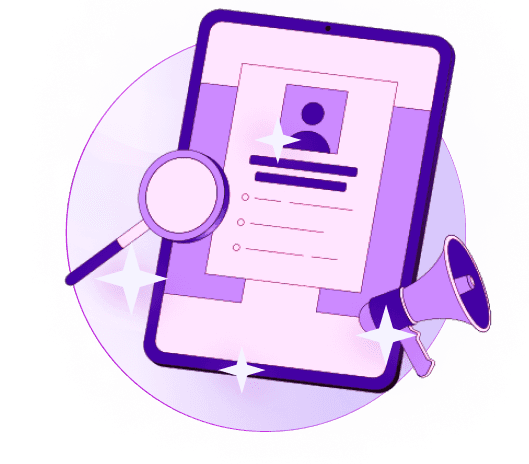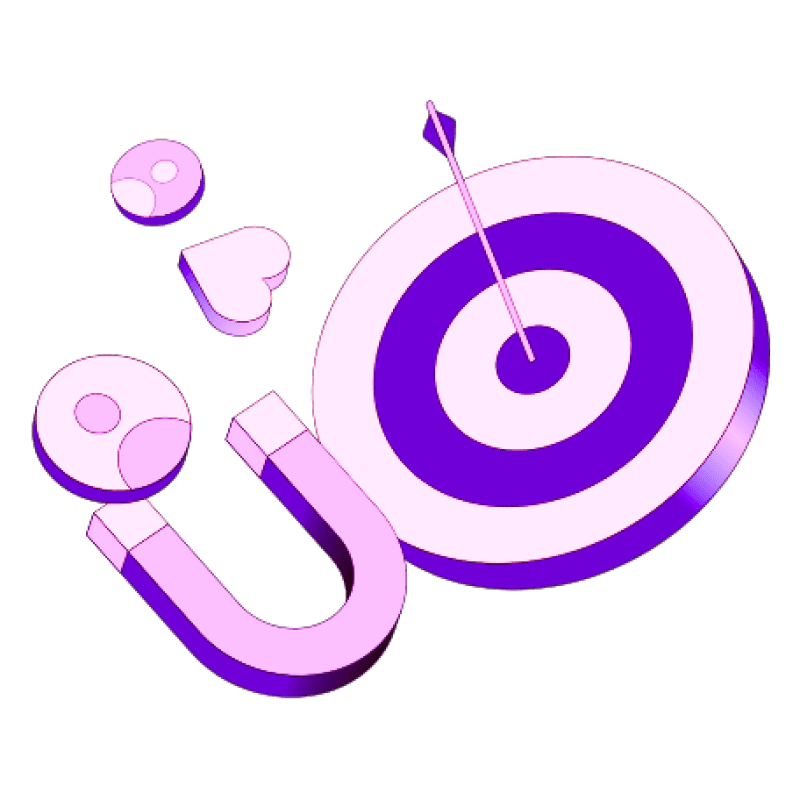Blogs
Articles

5 AI Lead Gen Metrics You Should Track in 2025
Traditional mass emails and cold calls fail to convert 79% of leads into sales.
Your sales team wastes four-fifths of their efforts when they rely on outdated lead generation tactics without tracking AI lead gen metrics. The numbers tell a different story for companies that utilize artificial intelligence in sales - they witness a 25% increase in sales on average.
The gap between AI-powered lead generation companies and those using traditional methods grows wider as we near 2025. Only a fifth of marketers believe outbound efforts work without AI-driven strategies. Companies must adapt quickly or risk falling behind competitors who use state-of-the-art tools to sell smarter and faster.
This piece will explore five critical ai lead gen metrics your business should track in 2025.
Let's take a closer look!
Why Tracking AI Lead Gen Metrics Matters in 2025?
AI lead generation metrics have become vital for businesses aiming to succeed in 2025's competitive scene. Companies that use AI in their lead generation work get 50% more sales-ready leads and cut acquisition costs by 60%. These numbers show why you need to watch your AI-powered lead generation results closely.
Traditional methods fall short when compared to AI in sales, which gives you applicable information to keep getting better. AI technology keeps growing, and knowing which metrics matter most will help you get the most from your investment.
The Data-Driven Advantage
Data forms the foundation of good AI lead generation. You won't know if your AI investments pay off or need fixes without tracking your progress. McKinsey's research backs this up - businesses using AI for sales see up to 15% higher revenue and 10-20% better sales ROI.
These numbers tell the story:
Marketing automation helps companies get 451% more qualified leads on average
AI-powered lead tracking boosts conversion rates by 20-50% and speeds up sales cycles
Leads that get AI-driven nurturing move 23% faster through sales than those that don't
Four out of five sales teams now use or plan to use AI tools in their work. This wide adoption shows that companies see how AI-driven lead generation metrics can reshape their success.
Beyond Basic Lead Counts
Old-school lead generation mostly looked at numbers - how many leads came in. AI lead gen metrics now tell us much more about lead quality and value. This helps businesses make smarter choices about where to put their resources.
Companies should watch three key metrics when using AI for lead generation:
Conversion rate - How many leads become paying customers, which shows real success
Lead quality - What value and potential new leads bring, helping focus on the best chances
Engagement levels - How possible customers react to campaigns and content, showing what works
How metrics drive smarter decisions in AI sales automation?
Data-driven decision-making has replaced gut feelings in our ever-changing sales world. AI sales metrics now guide strategic sales decisions and help businesses direct complexities with exceptional precision and confidence.
Sales decisions need immediate insights to stay relevant and get results. Companies that use AI lead gen metrics turn their sales processes into strategic advantages, often within two years. This transformation shows how artificial intelligence brings value to modern sales.
AI spots patterns in large datasets that humans might miss. Machine learning algorithms look at past sales data to find vital insights about product performance across demographics, successful sales strategies, and promising customer segments. Sales teams can now base their decisions on solid evidence instead of hunches.
We focused on high-impact activities when metrics shaped our strategy. AI-powered dashboards turn raw data into applicable strategies through:
Interactivity: Customizable visualizations of key performance indicators using various chart types
Real-time data: Instant access to refreshed information for quick, informed decisions
Data visualization: Easy-to-understand representations highlighting trends and patterns
Analytics snapshots: Historical data storage for tracking changes over time
Point-and-click analytics: User-friendly interfaces requiring no coding knowledge
Predictive analytics has changed how sales teams find and qualify leads. AI lead generation tools analyze historical data, market trends, and economic conditions to predict which leads will likely convert. Sales teams can now focus on promising opportunities and direct resources where they matter most.
The results speak for themselves. Companies using predictive analytics achieve 25% higher sales performance and 50% better forecast accuracy. Some companies can predict outcomes with 98% accuracy, which makes resource planning much more reliable.
Metric 1: Lead Qualification Accuracy
A shocking 67% of lost sales happen because of poor lead qualification. This number shows why lead qualification accuracy ranks as one of the most important ai lead gen metrics to watch in 2025.
What it measures
Lead qualification accuracy shows how well your AI system spots high-quality leads that match your ideal customer profile and show real buying intent. This metric tells you how precisely your artificial intelligence in sales sorts leads into sales-ready prospects versus those that need more nurturing.
The core elements it tracks include:
How many AI-qualified leads turn into opportunities
How fast AI-qualified leads move through sales stages
False positive rate (wrong identification of qualified leads)
False negative rate (missed qualified leads)
Companies that use AI for lead qualification see a 30% boost in lead conversion rates compared to old-school methods. Tracking this metric shows you how well your system tells real opportunities from time-wasters.
AI qualification accuracy works differently than manual scoring. It looks at hundreds of signals at once - from demographics to behavior, engagement, and intent signals. Human qualification relies on just a few data points, while artificial intelligence lead generation systems analyze patterns across website visits, email responses, downloaded content, and social media behavior.
Why it matters in AI-powered lead generation?
Your entire sales pipeline depends on lead qualification accuracy. When ai lead generation tools spot high-potential prospects correctly, your sales teams can put all their effort into promising deals. Poor accuracy wastes resources and makes teams lose faith in your AI system.
Results speak for themselves: 75% of companies using AI-powered lead qualification report better sales conversion rates. These businesses also close deals 20-30% faster.
Quick and accurate qualification helps your bottom line. Sales teams can jump on the best leads right away – timing matters here. Success rates drop 10x when response time goes beyond five minutes. Wait 10 minutes, and your success rate falls by 400%.
Your cost metrics also depend on qualification accuracy. As companies move from simple cost-per-lead to cost-per-qualified-lead measurements, getting qualification right becomes key to measuring true ROI.
How to improve it using AI tools
Better lead qualification starts with quality data. AI models work best with accurate, fresh information from various sources like website interactions, CRM systems, and social media engagement.
Here's how to boost qualification accuracy with ai lead gen tools:
Define clear qualification criteria - Spell out what makes a qualified lead based on your ideal customer profile. More specific criteria help your AI find, rank, and distribute quality leads better.
Implement predictive lead scoring - Machine learning algorithms can study past conversions and find key success factors. AI systems adjust their scoring automatically as new patterns show up.
Use natural language processing - NLP algorithms catch buying signals in emails and social posts that people might miss, adding depth to qualification.
Train your models regularly - Top AI lead qualification systems get better with feedback. Let your system learn from lead outcomes to make scoring more accurate.
Keep your data clean - Set up regular data cleaning and updates. Bad or biased data leads to wrong predictions about qualified leads.
Metric 2: Speed to Lead
Sales teams race against time more than ever before. Research shows that 78% of B2B customers purchase from the vendor that responds first. This reality makes speed to lead one of the most vital ai lead gen metrics to track in 2025.
Definition and standards
Speed to lead measures the time between a prospect's interest and your sales team's first response. The timer starts when a potential customer submits a form or asks for information. Today's standards show that the old "golden window" of five minutes doesn't cut it anymore.
Here are some eye-opening standards:
Best-in-class B2B SaaS companies respond within 5 minutes, while the industry average is nowhere near that at 42 hours
Financial services companies want 15-minute responses, compared to their industry's 24-hour standard
E-commerce businesses need instant responses, unlike the typical 1-hour average
A study of 2,241 U.S. companies found that businesses reaching out to leads within an hour were seven times more likely to connect with key decision-makers than those who waited just one hour longer. Only 7% of companies respond within five minutes, while 55% take five days or longer.
AI's role in reducing response time
AI revolutionizes speed to lead performance through automation and smart prioritization. AI-powered tools provide instant responses across multiple channels and connect with prospects right when their interest peaks, unlike traditional human-monitored systems.
AI lead generation technologies bring several key advantages:
These systems work 24/7 and ensure constant engagement whatever the time zone or business hours. AI algorithms analyze incoming leads instantly, prioritize them based on set criteria, and create automated responses right away. Advanced lead routing solutions cut out manual processes and get leads to sales professionals faster.
AI's effectiveness becomes clear when comparing traditional and AI-enhanced processes. Traditional outreach happens on human schedules, which means leads might wait hours or days for responses. AI systems react to lead behaviors instantly and trigger immediate engagement through chatbots, emails, or text messages. This shortens sales cycles.
Effect on conversion rates
Quick responses and conversion rates go hand in hand. Research shows that faster responses boost conversion potential, with sharp drops after short delays.
Reaching out to leads within the first minute boosts conversions by 391%. After five minutes, your chances of qualifying a lead drop by 80%. Calling within five minutes makes you 21 times more effective than waiting 30 minutes.
These findings matter a lot for ai lead gen metrics. Organizations using AI in sales should track their speed to lead performance closely. This single metric can affect every part of the sales process. With the right AI technology, businesses respond faster and make those responses personal and relevant, which helps convert more leads.
Speed to lead isn't just another metric to track for companies focused on ai lead generation in 2025. It's a competitive edge they can develop by using AI tools strategically.
Metric 3: Engagement Rate by Channel
AI lead gen strategies work best when you know your engagement metrics. A Harvard Business Review study shows that personalized engagement drives 5x higher ROI on marketing spend. Here's what you need to know about these metrics to optimize your lead generation in 2025.
Tracking email, chatbot, and social engagement
Your potential customers leave digital footprints when they interact with your business. Each channel tells its own story:
Email engagement metrics show you open rates, click-through rates, and response rates. People open emails with personalized subject lines 26% more often. Segmented campaigns have increased email revenue by 760%. These numbers help you see which messages appeal to specific audiences.
Chatbot engagement looks at conversation completion rates, question frequency, and sentiment analysis. Good chatbots typically see engagement rates between 35-40%. You can make your chatbot better by testing different welcome messages and visual elements. Google Analytics integration helps you compare how site visitors interact with your bot versus those who don't.
Social media engagement includes likes, shares, comments, and direct messages. Companies that use AI for social content see better results—5.87% engagement rates compared to 4.82% for non-AI content. TikTok shows similar trends, with AI-assisted content jumping from 3.86% to 4.35% engagement.
Using AI to personalize outreach at scale
AI has changed how businesses connect with customers. Generic mass messages are out. Smart, personalized interactions based on behavior patterns are in:
AI personalization looks at 18 behavioral data points per customer. Sephora used this approach and saw 30% more conversions and 25% higher order values. This technology creates dynamic experiences that adapt to customers in real-time.
B2B marketers who use AI across three channels see better results than single-channel campaigns. AI analyzes past interactions, industry trends, and customer priorities to create authentic, relevant messages that get more responses.
AI-powered chatbots can now detect emotion, intent, sentiment, and effort. This helps them respond better and reduce customer frustration. Businesses can now have natural conversations that feel personal and improve the customer's experience.
Tools that help measure engagement
Modern platforms offer excellent ways to track AI lead gen metrics:
Email platforms like Mailchimp use AI to run campaigns, find leads, and predict customer behavior. You get detailed stats on opens, clicks, and conversions.
Chatbot analytics show you engagement rates, satisfaction scores, and conversation length. These numbers help make your bot better. CRM integration lets you track the customer's experience from first chat to sale.
Social listening tools like Hootsuite watch brand mentions and keywords. They help you find leads and join relevant conversations. You can measure improvements by comparing them to your original numbers.
Cross-channel analytics platforms help you understand your leads better. This knowledge lets you create messages that speak to specific needs. AI analytics help businesses improve their outreach based on real engagement data.
Measuring engagement isn't optional anymore. It's how successful businesses understand what works in AI lead generation for 2025.
Metric 4: Predictive Lead Score Performance
Predictive lead scoring is the life-blood of modern AI-powered sales systems. A review of this significant metric shows that 98% of sales teams using AI report better lead prioritization.
How AI assigns lead scores
Predictive lead scoring is different from traditional methods because it makes use of information from data science and machine learning to analyze patterns. ai lead generation tools analyze big datasets to find shared traits among leads that converted and those that didn't, rather than relying on subjective judgment or fixed criteria.
These sophisticated algorithms analyze various data points including:
Demographic information (age, job role, location)
Behavioral patterns (website visits, email engagement)
Firmographic data (company size, industry, revenue)
Engagement metrics (webinar attendance, content downloads)
AI creates predictive models that automatically assign scores to each lead by processing this information, showing their likelihood of conversion. Sales teams can now streamline processes with analytical insights instead of guesswork.
Evaluating the accuracy of AI predictions
Model accuracy is a vital part of effective ai lead gen metrics tracking. The Area Under Curve (AUC) score serves as a standard - a model with AUC below threshold values usually performs poorly even though it might be publishable.
Organizations should track these metrics to review predictive scoring performance:
Lead-to-opportunity conversion rates reveal how well the model identifies genuine prospects. Sales team acceptance rates show how much practitioners trust AI-generated scores. False positive/negative rates highlight potential model biases or gaps.
Some AI lead scoring models come with "explainable AI" features that show how scoring decisions happen. Sales teams trust these transparent systems more, which leads to higher adoption rates.
Adjusting models based on outcomes
Predictive lead scoring models need constant refinement to work well. Data collection typically starts when the model is created and stored for analysis. Companies should retrain their models regularly with real customer data to get more accurate results.
Advanced systems like Salesforce Einstein automatically update scores every 10 days to capture new trends. So these models get smarter over time as they learn from real-life outcomes.
Regular reviews help optimize models based on changing market conditions and customer behaviors. AI lead generation systems stay relevant and effective as business conditions change through continuous learning and adjustments.
Metric 5: Cost per Qualified Lead (CPQL)
Quality matters more than quantity for modern sales teams. B2B tech companies spend between USD 208.00–USD 369.00 per lead. Every marketing dollar must count to generate qualified prospects.
Why CPQL is more relevant than CPL in AI lead gen?
Cost Per Qualified Lead (CPQL) is different from traditional Cost Per Lead (CPL). It measures the cost of getting leads that meet quality standards and show real buying intent. Many companies focus on CPL, but this can be misleading. Cheaper leads often result in lower quality and fewer conversions.
CPQL has clear benefits:
Better lead quality by finding prospects that match your ideal customer profile
Sales and marketing teams work together with shared qualification criteria
More accurate ROI assessment by focusing on leads that are likely to convert
Take this example: A company gets 100 leads at USD 10.00 each. This might seem cost-effective. But if only 25 leads meet quality standards, the real CPQL becomes USD 40.00. This reveals the actual cost to acquire good leads.
How AI reduces acquisition costs
AI brings down acquisition costs in several ways:
AI systems can spot buying signals across digital channels. This precise targeting cuts customer acquisition costs by 30–40% compared to old methods. AI-powered lead qualification removes manual research and cold outreach, reducing costs by up to 60%. The system also updates CRM entries automatically after customer interactions, saving 30% in admin costs.
These benefits grow over time as AI keeps learning. Companies that use AI to find customers have seen costs drop by up to 50% in some industries.
Tracking ROI from AI lead generation software
To measure returns from AI lead generation tools, companies need to track specific metrics:
The Conversely Lead Insights Platform showed practical ROI benefits. It analyzed call data to find the best lead sources, which cut acquisition costs by 22% in just 30 days. Companies that change to AI-powered CPQL models can move from time-based pricing to performance-based options like Cost Per Acquisition (CPA) or Cost Per Qualified Lead.
ROI gets better as AI becomes more precise at targeting. One agency cut its lead generation costs by 55% (from USD 8.22 to USD 3.67 per lead) by using AI-driven insights.
Conclusion
This piece shows how tracking five critical AI lead gen metrics will make the difference between struggling sales teams and high-performing organizations in 2025. Companies that measure Lead Qualification Accuracy, Speed to Lead, Engagement Rate by Channel, Predictive Lead Score Performance, and Cost per Qualified Lead learn about ways to improve continuously and generate substantial ROI.
Numbers tell the story - companies using AI-driven lead generation see 25% higher sales performance, 30% faster response times, and up to 50% lower customer acquisition costs. These organizations also achieve much higher conversion rates and free their sales teams from repetitive tasks that used to take up their time.
Smart businesses must utilize AI to identify high-quality prospects with genuine purchase intent instead of relying on outdated methods or simple metrics like lead volume alone. The gap between companies using AI for lead generation and those stuck with traditional approaches grows wider each day.
Evidence-based decision-making needs the right tools and strategies. You can revolutionize your lead generation processes today by visiting Persana.ai for AI-powered solutions designed to optimize your sales performance.

Create Your Free Persana Account Today
Join 5000+ GTM leaders who are using Persana for their outbound needs.
How Persana increases your sales results
One of the most effective ways to ensure sales cycle consistency is by using AI-driven automation. A solution like Persana, and its AI SDR - Nia, helps you streamline significant parts of your sales process, including prospecting, outreach personalization, and follow-up.



